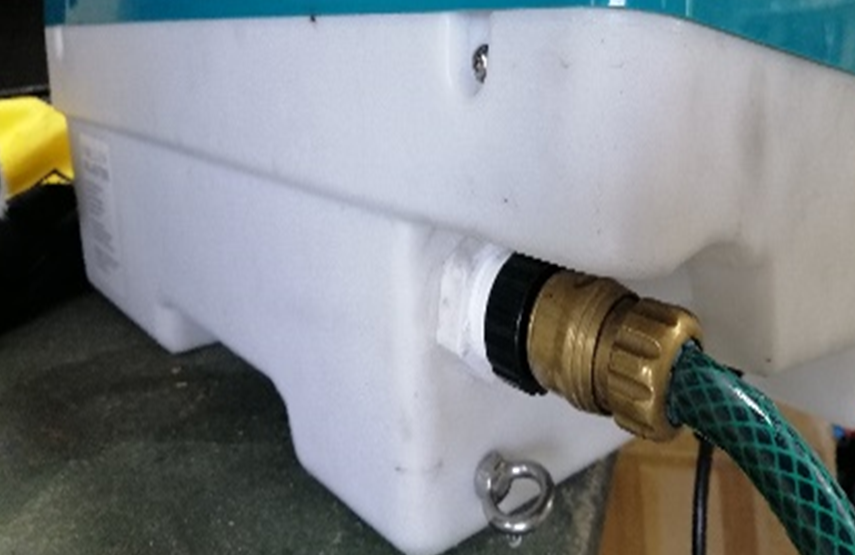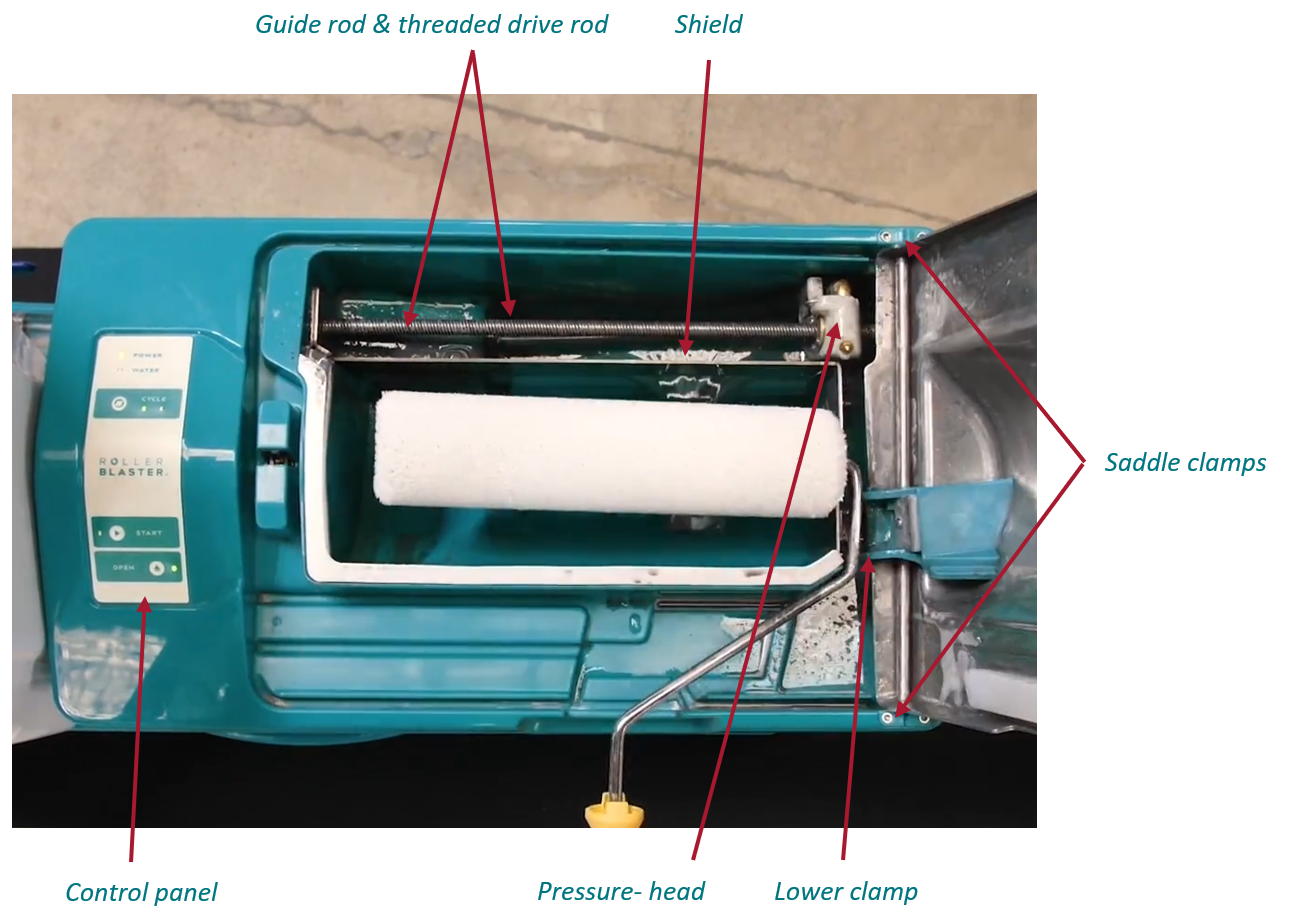Warnings
- The Roller Blaster® must be used with a Residual Current Device ( RCD )
- The Roller Blaster® is only to be used with water-based paints
- Do not use in direct sunlight or hot areas and keep a 30cm clear space from the left and right side for ventilation.
- Roller Blaster Limited does not accept any liability for damage caused by waste-water spillage or leakage.
Setting up the Roller Blaster®
- Position the Roller Blaster® on a flat level surface in a cool shaded place.
- Ensure the lid is closed, then screw on the male hose fitting provided and connect it to your mains water supply (see Fig. 1).
- Turn on the water.
Note: For the first use the water may drain out the exit of the machine for a minute or so, Make sure you have something to catch it. We also recommend turning off the water supply after you have finished cleaningto avoid a hose failing. - Plug the Roller Blaster® in to a 240-volt power supply with a residual current device (RCD) and turn on.

Before you start cleaning
- The Roller Blaster® is designed to suit most 230mm and 270mm trade painter’s roller handles, with a bar thickness of between 8 to 9.0 mm. However, if you want to clean a smaller length roller sleeve, simply put it on to a 230mm or 270mm roller handle and clean as normal.
- Ensure that the handle is clean and free from any paint build up, especially around the area where it is clamped into the machine. It is also important that the handle spins freely.
- We recommend using a new handle for best cleaning performance
Warning: Paint build up on the handle or a worn handle can stop the Roller Blaster® from cleaning effectively. In extreme situations build-up may break the chassis or cause severe vibration which could harm the Roller Blaster® machine. We recommend using a new clean handle for best results and to avoid damage.
Operating the machine
- Open the lid by pushing the open button. Place the roller handle with the roller sleeve on it, into the Roller Blaster®. Position the handle into the lower clamp (See Figure 2)
- Close the Lid by pushing firmly on the lid handle area until it clicks.
- Select either 1 or 2 cycles using the cycle button
- Press the start button, the start button will show a green light whilst in cycle and the lid light will start flashing to indicate it cannot be opened. Note, there is a 3 second delay before the Roller Blaster® starts.
- Once the cycles have finished the Roller Blaster will keep the lid locked for 5 seconds, the start button light will turn off and the open light will stop flashing and turn off. The lid can now be safely opened.
Tip: Rest your hand on the lid handle whilst you press the lid open button with your thumb to avoid drips landing back on to your roller sleeve
Note: At any time, you can pause the Roller Blaster® by pressing the start button again, you still won’t be able to open the lid until the open light turns off.
Care and maintenance
Cleaning
- To keep your Roller Blaster® clean we recommend that after you have finished cleaning sleeves you run the machine again, empty, as a cleaning cycle.
- If dried paint build-up occurs in some areas, you can remove this with mineral turpentine and a rag. Take care around the Control Panel – spot cleaning only. Excessive turpentine will damage the control panel.
Long Term Care
For the most part the Roller Blaster® is designed to look after itself, however the following should be done on a monthly basis:
- Clear any paint and fluff build up in the waste-water exit of the machine.
- Check the filter in the clean water hose connection entrance, pulling it out and cleaning it if necessary.
- The threaded drive rod and guide rod need lubricating once a week. You can do this by simply applying grease with your finger along the length of these
If the Threaded drive rod and guide rod, run out of lubrication the Roller Blaster® will shut down to prevent harm and the 2 cycle lights will start flashing. Open the lid then turn off the power and grease the threaded drive rod and guide rod, then manually twist the threaded drive rod until it loosens up. Finally grease the dry area too. Turn the power back on. You are now ready to go again.

Download this guide (PDF format – 350kb)

